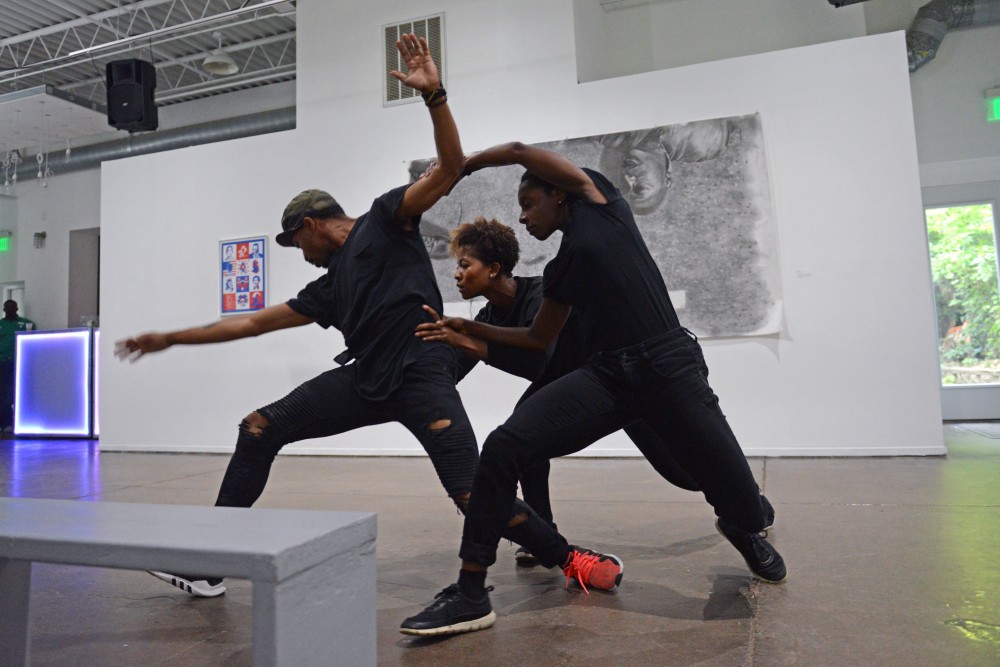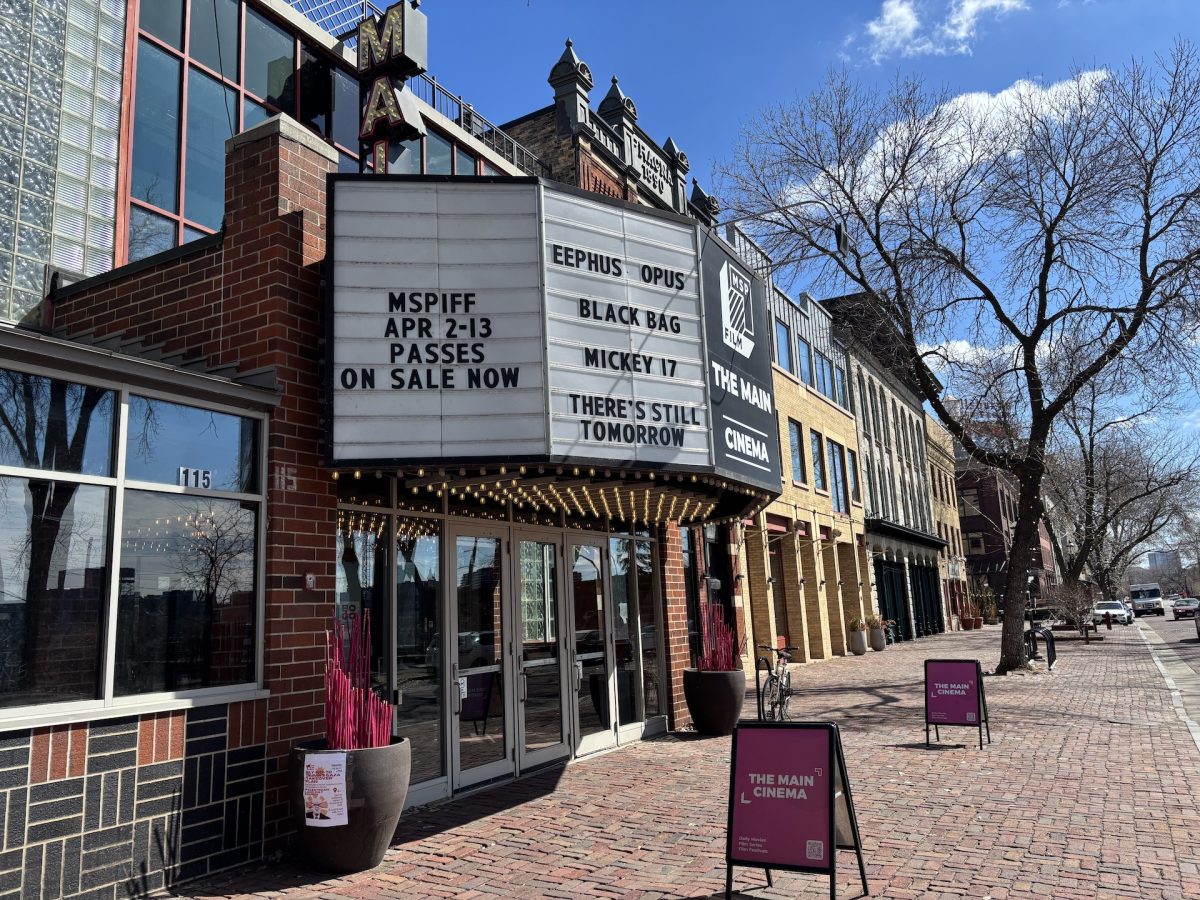In the wake of Jeronimo Yanez’s acquittal, the art at “The Shop” feels particularly charged. In one painting, a black boxer hangs on a cross with bubblegum pink accents in its grain. In another, a man’s blank face is depicted lying on the road next to a pair of black boots.
On Saturday, “The Shop”— a multimedia art exhibit exploring the iconography of the black barbershop — opened at the Public Functionary.
Crice Kahlil, a painter and recipient of the 2017 Artist Initiative Grant from the Minnesota State Arts Board, curated the exhibit.
The exhibit was borne of Kahlil’s need for a black space in art
“I always felt like I was ‘the black artist’ in any given class,” Kahlil said about his experience at the Minneapolis College of Art and Design. “I’m always making work about that, and I didn’t necessarily want to be ‘the black artist’ but it was kind of pressed upon me.”

Kahlil said there weren’t enough chances to make political types of art many black people are drawn to. His solution was to create the opportunity.
“So I thought, ‘Wow, I wonder what making art in a Black space would be like,’” he said. “None of us would be ‘the black artist.’”
This idea proved hard to realize.
“It’s been a long road … there aren’t a lot of POC owned galleries in the city,” Kahlil said.
In this struggle for black space, Kahlil was drawn to the idea of the black barbershop — a place where different generations of black people merge.
“I really wanted a well-rounded perspective — it’s so rare,” Kahlil said.
The result was an art exhibit diverse in both art forms and artists.
Seitu Jones, a former senior fellow in the University of Minnesota’s College of Food, Agriculture and Natural Resources, represented the multi-generational divide Kahlil hoped to bridge.
“We used to walk in the room and be the youngest ones there,” Jones said, reflecting on his time as an artist in the Twin Cities.
Among Jones’ paintings on display is a startling self-portrait: an image of Jones’s face lying lifeless on the street next to the shoes of a police officer. The painting is about six feet wide, and it’s difficult to look at both the shoes and the face at once — the space is too large.

Also among the older generation of artists exhibited is Ta-coumba Aiken.
Aiken’s Picasso-esque collages were painted on circular canvases and feature faces hidden by the chaos of the lines.
A half-hour after the doors opened Saturday, a group of three dancers interrupted the exhibit with an energetic dance performance that roamed through genres, from modern dance to hip-hop.
“We just heard about this gig a week ago … we only had two days to put this together,” Darwin Black, one of the dancers, said.
The dance was inspired by the art in the exhibit.
“We looked at the imagery of the artwork and tried to find the physicality of it,” Black said.
The exhibit stretches over the entire terrain of black culture, spanning generations and media. The common thread is simply black life — and in some cases, black death.
“We’re artists working with the themes that apply to our daily lives,” Kahlil said.
What: “The Shop”
When: July 1 – July 15
Where: Public Functionary, 1400 12th Ave. N.E., Minneapolis
How much: Free








